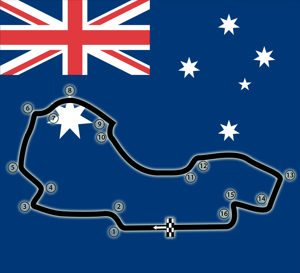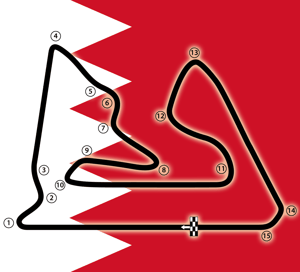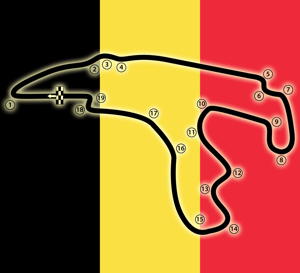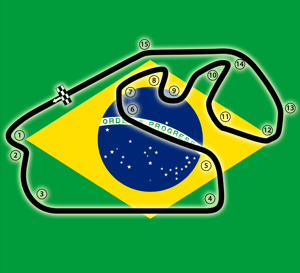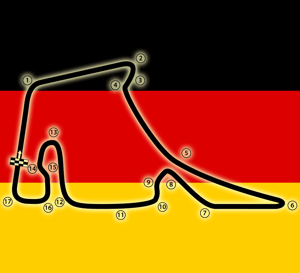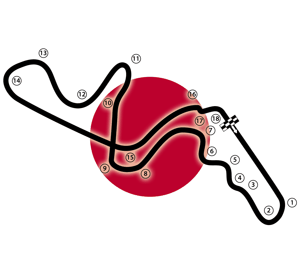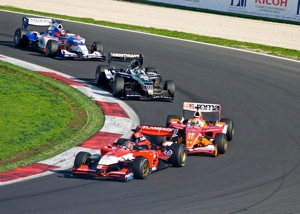 For all its glitz and glamour, its high-revs and tyre screeching, and its incessant acceptance – nay, embracing – of every endorsement opportunity that comes its way, it must be remembered that Formula 1 is a sport. Well, that’s what fans of this rolling circus of motor might would have us believe. But whatever your thoughts on Bernie Ecclestone’s ultimate plaything, the sport has garnered such a wide following in recent decades that the bookies have started to embrace F1 too.
For all its glitz and glamour, its high-revs and tyre screeching, and its incessant acceptance – nay, embracing – of every endorsement opportunity that comes its way, it must be remembered that Formula 1 is a sport. Well, that’s what fans of this rolling circus of motor might would have us believe. But whatever your thoughts on Bernie Ecclestone’s ultimate plaything, the sport has garnered such a wide following in recent decades that the bookies have started to embrace F1 too.
With more bookmakers than ever offering betting markets on this most prestigious of motorsport competitions, there has never been a better time to bet on Formula 1. So read on for the most popular betting types, the rules that could cause you to have kittens and strategies to employ when trying to get that net win from betting on the richest sport on four wheels.
- In This Article:
- How to Bet
- Betting Rules
- Strategy
- Circuits
- History
Schedule
| Date | Grand Prix | Circuit |
|---|---|---|
| 5th May 2024 | Miami Grand Prix | Miami International Autodrome |
| 19th May 2024 | Emilia Romagna Grand Prix | Autodromo Internazionale Enzo e Dino Ferrari |
| 26th May 2024 | Monaco Grand Prix | Circuit de Monaco |
| 9th Jun 2024 | Canadian Grand Prix | Circuit Gilles Villeneuve |
| 23rd Jun 2024 | Spanish Grand Prix | Circuit de Barcelona-Catalunya |
| 30th Jun 2024 | Austrian Grand Prix | Red Bull Ring |
| 7th Jul 2024 | British Grand Prix | Silverstone Circuit |
| 21st Jul 2024 | Hungarian Grand Prix | Hungaroring |
| 28th Jul 2024 | Belgian Grand Prix | Circuit de Spa |
| 25th Aug 2024 | Dutch Grand Prix | Circuit Zandvoort |
| 1st Sep 2024 | Italian Grand Prix | Autodromo Nazionale Monza |
| 15th Sep 2024 | Azerbaijan Grand Prix | Baku City Circuit |
| 22nd Sep 2024 | Singapore Grand Prix | Marina Bay Street Circuit |
| 20th Oct 2024 | United States Grand Prix | Circuit of the Americas |
| 27th Oct 2024 | Mexican Grand Prix | Autodromo Hermanos Rodriguez |
| 3rd Nov 2024 | Brazilian Grand Prix | Autodromo Jose Carlos Pace |
| 8th Dec 2024 | Abu Dhabi Grand Prix | Yas Mariana Circuit |
How To Bet On Formula 1
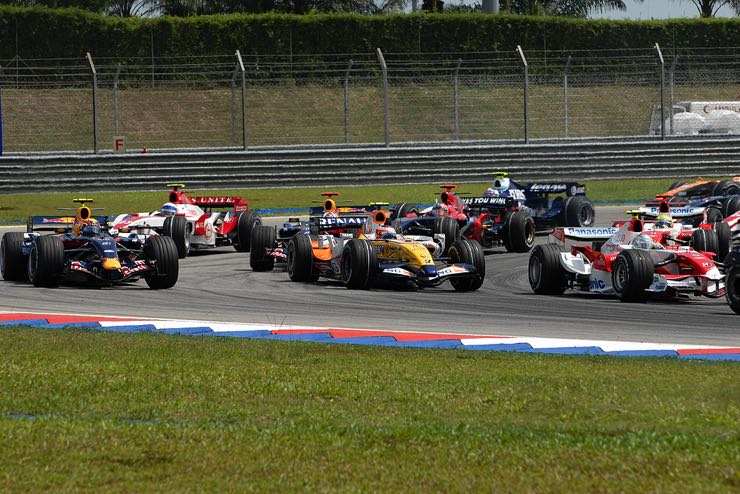
With each Grand Prix offering different challenges that suit the particular strengths of specific drivers or teams, along with the various rules and regulations that serve to increase safety and competitiveness alike, Formula 1 provides rich pickings for sports betting fans. Here are some of the best bets out there.
Popular F1 Bets
| Bet Types | Descriptions |
|---|---|
| Grand Prix Winner | This is simply backing the driver you think will win a specific Grand Prix. You can place this bet at any stage from before the first practice session to well into the race itself (with bookies who offer in-play betting). |
| Podium Finish | Similar to a “to place” bet in horse racing, here you are backing a driver to finish on the podium, i.e. in the first three. Your chances increase compared to the race winner bet, but obviously your odds go the other way. |
| Pole Position | This involves backing a driver to qualify fastest for the race and hence start at the front of the grid in pole position. |
| Hat-Trick | This bet – seen as a novelty by some, but a lucrative additional betting market to others – involves picking a driver who you think will get pole position, have the fastest lap of the race and win the Grand Prix itself. Usually available at large odds given the infrequency (these days) of its occurrence. |
| Outright Championship Betting | Here you can bet on which driver or team will win their respective championship over the course of the season. You are able to place such bets either prior to the commencement of a given season or indeed anytime up to the final race (if they haven’t already been decided). |
| Various Race Bets | There are plenty of options for betting on events that may take place within a given Grand Prix. For instance you can bet on whether or not the safety car will appear during a race, the number of cars that will make it to the finish or which car will be the first to retire from the race. |
Pre-Race Bets
Betting on which driver will be on pole position is a pre-race bet, as it is effectively which driver will win the final qualifying session. Prior to the Sunday Grand Prix the cars have the opportunity to have two practice sessions on Friday, one on Saturday morning and then the crucial qualifying session on Saturday afternoon. In another of F1’s abbreviations (thankfully this one is easy to understand) these are called Q1, Q2 and Q3, with the fastest driver in Q3 starting on pole.
Some but not all bookmakers offer bets on these various sessions. With the better bookies you can usually bet on the winning driver and car, with each way options sometimes also available. With regulations regarding the amount of fuel cars are permitted to carry making these sessions harder to gauge this is a market probably best left alone unless you are very knowledgeable about the sport, or you’ve got a hotline to one of the team engineers.
Other Bets
There are loads of other markets you can bet on and sometimes these can throw up excellent opportunities to earn a net win. Backing a particular driver not to finish a race is an interesting bet and if you have doubts about a car or driver’s reliability and consistency this is the way to cash in. This is quite a weather dependent market, with rain and extreme heat increasing the chances of retirements and crashes, so that is another factor to look out for.
At the opposite end of the spectrum, if you have supreme confidence in your pick, you could consider selecting them for the race hat-trick of pole position, race winner and fastest lap, leading to a bumper payout. The bookies are always being inventive thinking of new markets so keep an eye on your favourite bookmaker for bets such as if will there be a safety car deployed in a race, how many drivers will be classified, will both cars (of a constructor) finish the race, whether one particular driver will do better than another or what the nationality of the winner will be.
Betting Rules
In such a technical sport that involves various provision for issuing penalties to drivers or teams retrospectively, there are a few betting rules of which you should be aware. For instance, most bookies will pay out based on the result at the time of the official FIA podium presentation, even if one or more of the drivers are subsequently disqualified or demoted.
If a race is abandoned for whatever reason, most bookmakers will void all bets, though some may stand if they have already been completed – for instance the race may have been abandoned long after the first retirement had occurred, with all such bets already having perhaps been settled.
Key Rules to Be Aware Of
- Official Result – In the event of a steward’s enquiry or appeal most bookies settle the bet according to the official podium presentation.
- Driver v Driver Match Betting – Both drivers must start the race or bets are void and if neither finish the winner is the driver with most complete laps – if level the bet is void.
- Safety Car – Races started by a safety car are not deemed to have had one deployed unless used again in the race.
- Classifications & Times – Official FIA results are used.
- DNS – If a driver is classed as DNS (did not start) most bookmakers will class most bets as void. Check your specific bookmaker and bet to be sure though.
Betting Strategy
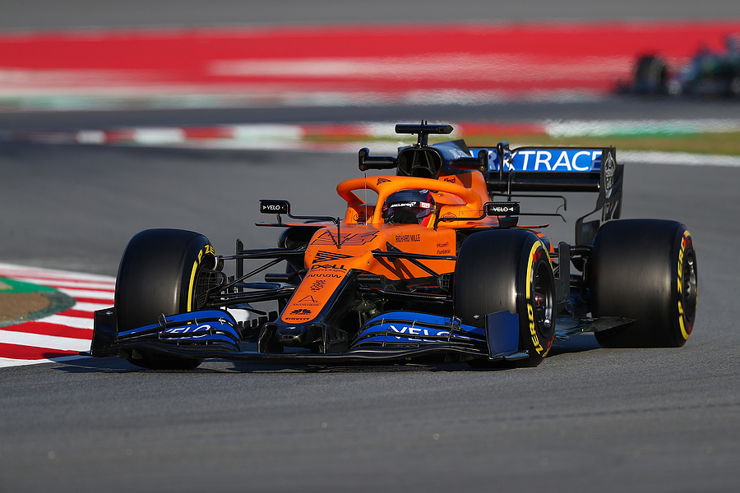
When betting on F1, know your tracks and know your cars. Understanding the relative merits of cars – and the drivers in them of course – and how they relate to the traits of the specific Grand Prix racetracks can give you a massive advantage when it comes to picking out the winning bets. For instance, if you know that a particular team always performs well in qualification, but drops away in the race itself, you might find some value in backing them to do well in places where overtaking is a challenge, such as Monaco.
Also, doing your research between races – especially when there are breaks of a few weeks – can be of crucial importance when seeking the bets to chase. If you find out a team has had a breakthrough with a particular component of their car that had been particularly troublesome, they could be overpriced for the next race and hence worth backing. The past form of drivers on particular tracks can also offer a fair indication of how they will perform when returning.
While much of this information is freely available, many will simply back the bookies’ favourite even if he crashed out of the last two visits to the circuit ahead of someone who has had a tough season but has won two of the last three there. Often returning to a favoured circuit can reignite a driver’s competitive edge and make a mockery of long odds, and a healthy net win for you.
Do Your Research
The best way to try to get a net win from betting in general is to arm yourself with as much information as possible, and then to make sure you understand it and use it to your advantage. The statistics relating to F1 are actually surprisingly limited. Whilst it’s quite easy to find out who won almost any race in the history of the sport, who finished where and so on, that actually tells you relatively little about the complexity of the race. For example, you would have to delve quite deeply to discover that, for example, a particular driver was on course to win a race until a backmarker took him out, or an accident brought the safety car out and cut a huge lead.
Looking back at which drivers or even teams have enjoyed success at a particular track is one simple thing to look for that could point to future successes. Certain drivers are stylistically better suited to particular tracks and there is also the confidence factor to consider – if the driver has happy memories of a circuit and feels comfortable there they are sure to drive better, and vice-versa if they have bad memories.
Weather
The weather also plays a large part in betting on Formula One. In perfect conditions the cream is almost certain to rise to the top but if rain is forecast then two things should be noted. Firstly, the race will be far more unpredictable, especially if the rain falls as multiple showers.
Luck, timing and tyre strategy will become crucial aspects of the race and so backing an outsider may be a better value bet than going with a short-priced favourite. Secondly, backing a driver who is known to be good in the wet can also be excellent value, especially if you get on before the market has reacted to the news about the weather. Jenson Button is one of the best in the rain… nothing to do with growing up in Britain of course!
Watch the Practice Sessions
Another factor to look out for is how the teams do in the practice session, although regulations regarding the fuel load make this factor of less importance than it used to be. It is also crucial to be aware of any new technology the teams are bringing in as this can also have a big impact, as well as if they have tweaked existing technologies between races (positive pre-race Tweets from F1 drivers about the state of their cars could give clues on this front, for instance).
Circuits
Format & Major Races

Formula One, also known as Formula 1 or simply F1, is the highest class of motorsport racing on the planet. With astronomical amounts of money being pumped into the high-octane sport each year, Formula One is one of the richest and most prestigious sports series in the world.
Drivers, Teams & Venues
As of 2017, 20 drivers – who are spread across 10 teams (with two drivers in each team) – compete over the course of a seven-month period, usually from March to November. Along the way, they do battle on 20 gruelling, unforgiving, world-class and spectacular tracks.
The events take place all over the world, ranging from the Australian Grand Prix at Melbourne Grand Prix Circuit, the British Grand Prix at Silverstone Circuit, all the way to the Abu Dhabi Grand Prix at the Yas Marina Circuit.
Races & Speeds
The number of races over the course of a season has changed drastically throughout the years, with several Grand Prix’s in various countries coming and going. The first non-championship race was held way back in 1946, with the World Drivers’ Championship forming the following year. In 1950, there were only seven Grand Prix venues, compared to the 20 courses we’re treated to these days.
Formula One cars are the fastest racing cars in the world, reaching staggering speeds of up to 233 mph. With extremely fast wheel-to-wheel action, tight corners and impeccably skilled drivers, it’s no surprise that nearly 500 million people from around the world tune in to watch the action every season.
Money
As we touched on, F1 is an extremely pricy sport, even the steering wheels costs in the region of £20,000. Ever since Bernie Ecclestone took over in the 1970s, Formula One has grown into a huge business. In 2016, the company made around £1.4 billion, with one half going to the teams, and the other half going to the F1 group and shareholders. The top drivers can earn in the region of £30 million a year before bonuses.
With a number of outstanding events in the calendar each year, we’ll be giving you an insight to the biggest, most popular and most prestigious Formula One Grand Prix venues and races, what makes them so special and unique, and why they draw such huge crowds.
British Grand Prix
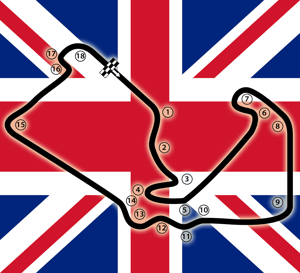
One of the most popular races on the calendar is the British Grand Prix, which takes place at Silverstone Circuit in Northamptonshire and Buckinghamshire, England. Racing at this famous, old circuit began all the way back in the 1940s. Since then, we’ve seen many memorable Grands Prix at this venue.
Britain’s Lewis Hamilton, who’s a three-time world champion, won at Silverstone three years in a row from 2014 to 2016. At the time of writing, Hamilton has won four British Grands Prix at this venue. Since the first F1 race at Silverstone back in 1950, eight Brits have triumphed on this world-famous circuit, including the likes of Jim Clark, Stirling Moss, Jackie Stewart, Nigel Mansell and David Coulthard. This venue has been going strong since 1987, and is contracted to F1 until 2026.
Monaco Grand Prix
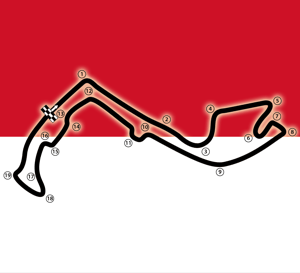
Without doubt, the most prestigious race on the current calendar is the Monaco Grand Prix which takes place through the streets of this principality. The Circuit de Monaco is filled with glitz and glamour, with hard and fast racing to boot, as the Monte Carlo event oozes sophistication. You will struggle to find a racing venue in any motorsport as stunning as this one.
With several tight corners and elevation changes, thousands of fans flock to Monaco each year for this outstanding annual race. The late, great Ayrton Senna has won more Monaco Grands Prix than any other driver in history, with six crowns to his name. Graham Hill and Michael Schumacher are joint second on five. Meanwhile, McLaren are the most successful team on this track at present, securing an unrivalled 15 wins at this spectacular circuit.
USA Grand Prix

The United States Grand Prix is another event that excites the crowds each year. This particular race has been held in the States in one form or another since 1908, originally as the American Grand Prize, and later joining F1. At this current time, there have been 38 editions under the Formula One flag, with those Grands Prix taking place in six different locations in the US over the years. Since 2012, it’s been held at the Circuit of the Americas in Elroy, Texas.
Hamilton, who’s made a huge impact in the sport since his debut in 2007, has won the US GP five times (at the time of writing), joining with Michael Schumacher at the top of the standings. The Herefordshire-born star won this race three years in a row in 2014, 2015 and 2016. The event’s friendly atmosphere and unique set of spectators makes this one of the most popular races on the Grand Prix calendar.
Abu Dhabi Grand Prix
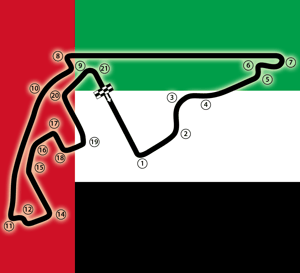
Last, but by no means least, is the spectacle of the Abu Dhabi Grand Prix, which is often the final GP of the season these days. The first race in the United Arab Emirates took place in 2009, and it has grown stronger and stronger as each year has passed by. F1 opened its doors to Abu Dhabi in the shape of the first ever Formula One Festival in 2007, two years later, they were racing at the Yas Marina Circuit.
Once again, Lewis Hamilton holds the joint record for most wins at a venue, as he has finished in first position on three occasions (2011, 2014 and 2016), with four-time world champion Sebastian Vettel also securing three Abu Dhabi GP wins. The inaugural Grand Prix in the UAE was the first ever day-night race, which was won by Sebastian Vettel who was driving for Red Bull at the time.
History
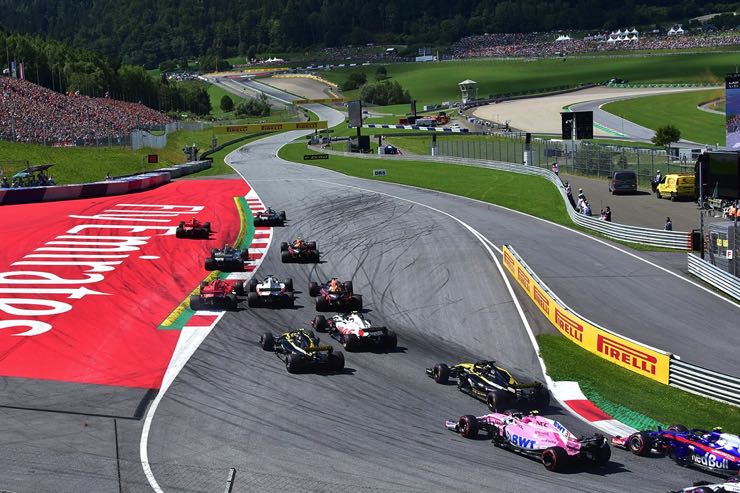
F1, Formula 1, Formula One – call it what you will (its official title is the FIA Formula One World Championship) – is the top of the tree when it comes to motorsport. The sport’s global appeal and glamorous image have made it one of the richest sports in the world, with the top stars earning around £15m per season and legend Michael Schumacher reportedly worth around £520m.
That fortune and the global fame that goes with it is all a giant leap away from the sport’s roots and the drivers who competed with all the associated thrills and risks in the early years. Whilst there was motor racing before World War II, and plans were underway to create a new World Championship, Formula One really came into being in 1946. The “formula” refers to the rules relating to the car and these were established formally in 1947 with the first world championship race taking place at Britain’s Silverstone track in 1950.
Who Won the First Title?
The first title was won by Italian Giuseppe Farina in an Alfa Romeo, with Argentine great Juan Manuel Fangio triumphing in 1951 and 1954-57 inclusive. His record of five world championships stood until Schumacher eclipsed him in 2003 and the South American is still considered one of the all-time greats. British driver, Stirling Moss, was a rival of Fangio and he is, in many people’s eyes, the greatest driver never to have lifted the world crown.
Early Vehicles Used
In those early years the cars were produced by road car manufacturers, with Alfa Romeo, Mercedes, Ferrari and Maserati at the fore. The cars were relatively straight forward but new technologies, many used in modern vehicles, were introduced in an attempt to gain a competitive edge.
Sponsorship
In 1968, sponsorship (now almost as integral to F1 as anything else) entered the sport, with Lotus painting Imperial Tobacco livery on their cars. It wasn’t until the 1970s that the sport as we now know it began to take shape and Bernie Ecclestone was the man who made that happen. Ecclestone, who raced competitively in the late 1940s and early 50s, made his money through a motorcycle dealership and property deals and in 1971 bought the Brabham Formula One team.
This earned him a seat on the Constructors’ Association and by 1978 he became the association president. He was pivotal in shifting power away from the track owners and into the hands of the constructors by forcing the track owners to accept a deal which surrendered track advertising to the teams.
Major Changes
The sport grew massively in the 1980s and 90s with this period being viewed by many as a golden era, with greats like Ayrton Senna, Alain Prost and Nelson Piquet bringing brilliance, glamour and rivalry to the table. The tragic death of Senna and Roland Ratzenberger in 1994 at the San Marino Grand Prix, along with other serious injuries that year brought about yet another massive change in F1.
Technological advancements had made the cars simply too quick and too powerful and so huge changes were made to make the sport safer. In 1995 Michael Schumacher won the first of his seven world championships and he carried the mantle of the motor racing legends that came before him.
These days, Formula One looks to have a new hero in Sebastian Vettel and the sport remains in rude health. It evolves constantly, with financial, design and technological changes being introduced to maintain excitement and speed whilst making what is inherently a dangerous sport as safe as possible while ensuring it still has the same buzz of excitement. While it has its detractors, F1 remains one of the world’s most glamorous, exciting and popular sports… and also one of the best on which to bet!
